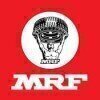Junior Engineer Mechanical Maintenance
20+ Junior Engineer Mechanical Maintenance Interview Questions and Answers

Asked in JSW Steel

Q. Ozone (O³) has a higher molecular weight than Oxygen (O²). Based on weight, O³ should be more prevalent at lower altitudes compared to O², but the opposite is observed in reality. Explain this phenomenon.
Ozone (O₃) is found higher in the atmosphere due to its formation process and stability, despite being heavier than oxygen (O₂).
Ozone is formed from oxygen molecules (O₂) when exposed to ultraviolet (UV) light, primarily in the stratosphere.
Ozone's formation occurs at high altitudes where UV radiation is more intense, leading to its concentration in the ozone layer.
O₂ is more stable and abundant at lower altitudes where it is produced by photosynthesis and is essential for li...read more

Asked in JSW Steel

Q. When you take a bath in the winter, why does steam come from your body?
Steam is discharged from the body during winter bathing due to the difference in temperature between the body and the surrounding air.
The body is warmer than the surrounding air, causing the moisture on the skin to evaporate and form steam.
The steam is visible due to the cold air condensing the water vapor.
This is a natural process and does not indicate any medical condition.
Junior Engineer Mechanical Maintenance Interview Questions and Answers for Freshers

Asked in Thriveni Earthmovers

Q. How do you check for internal leakages in a control valve?
Control valve internal leakages can be checked through various methods.
Performing a visual inspection of the valve and its components
Using ultrasonic leak detection equipment
Conducting a pressure drop test
Performing a bubble test using a soap solution
Checking the valve position indicator
Analyzing the valve's performance data
Regular maintenance and testing of the valve

Asked in Aditya Birla Group

Q. What is a pump, and what are the different types of pumps?
A pump is a mechanical device used to move fluids from one place to another. There are different types of pumps based on their working principle and application.
Types of pumps include centrifugal pumps, positive displacement pumps, reciprocating pumps, and rotary pumps.
Centrifugal pumps use a rotating impeller to create a flow of fluid.
Positive displacement pumps trap a fixed amount of fluid and then force it into a discharge pipe.
Reciprocating pumps use a piston or diaphragm...read more

Asked in JSW Steel

Q. Draw Carbon-iron graph and what is roughness?
Answering a question on Carbon-iron graph and roughness for Junior Engineer Mechanical Maintenance.
Carbon-iron graph shows the relationship between carbon content and hardness of steel.
Roughness is the measure of irregularities in a surface, usually measured in micrometers.
It can affect the performance and lifespan of mechanical components.
Surface roughness can be controlled through various machining processes such as grinding, polishing, and honing.
Carbon-iron graph can be u...read more

Asked in Thriveni Earthmovers

Q. If a machine has starting problems, how would you solve it?
Troubleshooting machine starting issues involves checking power supply, controls, and mechanical components systematically.
Check the power supply: Ensure the machine is receiving the correct voltage and current.
Inspect control systems: Verify that all switches, relays, and sensors are functioning properly.
Examine mechanical components: Look for any jams or obstructions in moving parts.
Review safety interlocks: Ensure that all safety mechanisms are disengaged to allow operatio...read more

Asked in Thriveni Earthmovers

Q. Explain series and parallel connections.
Series and parallel connections are two types of electrical circuits used to connect components.
In a series connection, components are connected end-to-end, so the current flows through each component in turn.
In a parallel connection, components are connected side-by-side, so the current is divided among them.
Series connections increase the total resistance and decrease the total current, while parallel connections decrease the total resistance and increase the total current....read more

Asked in Satyam Auto Components

Q. 0 breck down in line maintenance
Zero breakdown in line maintenance is the goal of any maintenance team.
Regular preventive maintenance checks
Proper lubrication of machines
Timely replacement of worn-out parts
Training of maintenance staff
Use of advanced technologies like predictive maintenance
Continuous monitoring of equipment performance
Share interview questions and help millions of jobseekers 🌟


Asked in SRF

Q. Which permits are used in the company?
In mechanical maintenance, various permits ensure safety and compliance during maintenance activities.
Work Permit: Required for any maintenance work to ensure safety protocols are followed.
Hot Work Permit: Needed for activities involving open flames or heat sources, like welding.
Cold Work Permit: Used for non-hazardous maintenance tasks that do not involve heat or sparks.
Isolation Permit: Ensures that equipment is properly isolated from energy sources before maintenance.
Confi...read more

Asked in Nitika Pharmaceutical Specialities

Q. What is the full form of HEPA filter?
HEPA stands for High-Efficiency Particulate Air, a filter that captures 99.97% of particles as small as 0.3 microns.
HEPA filters are commonly used in air purifiers to improve indoor air quality.
They are essential in hospitals to prevent airborne infections.
Used in vacuum cleaners to trap dust and allergens.
Found in HVAC systems to enhance air filtration efficiency.

Asked in Thriveni Earthmovers

Q. How do you solve a breaking failure?
Breaking failure can be solved by identifying the root cause and implementing corrective actions.
Identify the root cause of the breaking failure
Implement corrective actions such as repairing or replacing the broken parts
Conduct regular maintenance and inspections to prevent future breaking failures
Train employees on proper usage and maintenance of equipment
Use high-quality materials and equipment to reduce the risk of breaking failures

Asked in Paradeep Phosphates

Q. Instrument & material differences ???
Instrument and material differences are related to the type and function of equipment used in mechanical maintenance.
Instruments are tools used to measure, monitor, or control various parameters such as temperature, pressure, flow rate, etc.
Materials are substances used to construct or repair equipment, such as metals, plastics, ceramics, etc.
Instruments are typically electronic or mechanical devices, while materials can be natural or synthetic.
Examples of instruments include...read more

Asked in Thriveni Earthmovers

Q. What are the differences between a pump and a motor?
Pump is used to transfer fluids while motor is used to convert electrical energy into mechanical energy.
Pump is used to move fluids from one place to another while motor is used to rotate machinery.
Pump has an inlet and outlet while motor has a rotor and stator.
Pump is used in fluid systems while motor is used in mechanical systems.
Examples of pumps include centrifugal pumps, positive displacement pumps, and axial flow pumps. Examples of motors include AC motors, DC motors, a...read more

Asked in NBC Bearings

Q. What are the different types of bearings?
Bearings are mechanical components that reduce friction between moving parts, enhancing efficiency and longevity.
1. Ball Bearings: Commonly used in electric motors and bicycles for smooth rotation.
2. Roller Bearings: Used in heavy machinery and automotive applications for load support.
3. Needle Bearings: Ideal for applications with limited space, such as in gearboxes.
4. Thrust Bearings: Designed to handle axial loads, often found in automotive applications.
5. Magnetic Bearing...read more

Asked in Thriveni Earthmovers

Q. Hydraulic cylinder operation slow
Possible causes of slow hydraulic cylinder operation
Low hydraulic fluid level
Clogged or dirty hydraulic filter
Worn out piston seals
Leaking hydraulic lines
Faulty control valve
Incorrectly adjusted relief valve
Excessive load on the cylinder
Improperly sized cylinder for the application

Asked in Bharat Forge

Q. What is your list count?
Varniyour list count refers to a method for tracking and managing maintenance tasks in engineering.
Varniyour list count helps prioritize maintenance activities based on urgency and importance.
It can be used to track the number of tasks completed versus pending.
For example, in a mechanical maintenance context, it may include tasks like equipment inspections, repairs, and replacements.
This method aids in resource allocation and scheduling for maintenance teams.

Asked in Coal India

Q. What is a hydraulic system?
A hydraulic system is a technology that uses liquid to transmit power.
Uses incompressible fluid to generate power
Consists of a pump, valves, cylinders, and hydraulic fluid
Commonly used in heavy machinery like excavators and cranes

Asked in Thriveni Earthmovers

Q. Explain the fuel system.
The fuel system is responsible for delivering fuel to the engine for combustion.
The fuel system includes the fuel tank, fuel pump, fuel filter, fuel injectors, and carburetor.
The fuel pump draws fuel from the tank and sends it to the engine.
The fuel filter removes impurities from the fuel before it reaches the engine.
Fuel injectors spray fuel into the engine's combustion chamber, while a carburetor mixes fuel and air before sending it to the engine.
The fuel system must be reg...read more

Asked in Bharat Forge

Q. What is the standard value of air pressure in this context?
Air pressure is the force exerted by air molecules in a given area, measured in units like Pascals or psi.
Standard atmospheric pressure at sea level is approximately 101.3 kPa (kilopascals) or 14.7 psi (pounds per square inch).
Air pressure decreases with altitude; for example, at 5,000 feet, it is about 84 kPa.
Air pressure is crucial in various applications, such as tire inflation, where proper pressure ensures safety and efficiency.
In weather systems, low air pressure often ...read more

Asked in MRF Tyres

Q. Types of cooling tower
Cooling towers are heat rejection devices that expel waste heat to the atmosphere through the cooling of water.
Natural Draft Cooling Towers: Use natural convection to circulate air; examples include hyperbolic cooling towers.
Mechanical Draft Cooling Towers: Use fans to force air through the tower; examples include induced draft and forced draft towers.
Wet Cooling Towers: Utilize water evaporation to cool; commonly used in power plants.
Dry Cooling Towers: Use air to cool witho...read more
Asked in Ruchi Petro Plast

Q. Types of bearing
Bearings are mechanical components that reduce friction between moving parts, enhancing efficiency and lifespan.
1. Ball Bearings: Use spherical balls to maintain separation between the bearing races. Example: skateboard wheels.
2. Roller Bearings: Utilize cylindrical rollers for load distribution. Example: heavy machinery.
3. Needle Bearings: A type of roller bearing with long, thin rollers. Example: automotive applications.
4. Thrust Bearings: Designed to handle axial loads. Ex...read more
Interview Experiences of Popular Companies






Calculate your in-hand salary
Confused about how your in-hand salary is calculated? Enter your annual salary (CTC) and get your in-hand salary


Reviews
Interviews
Salaries
Users










